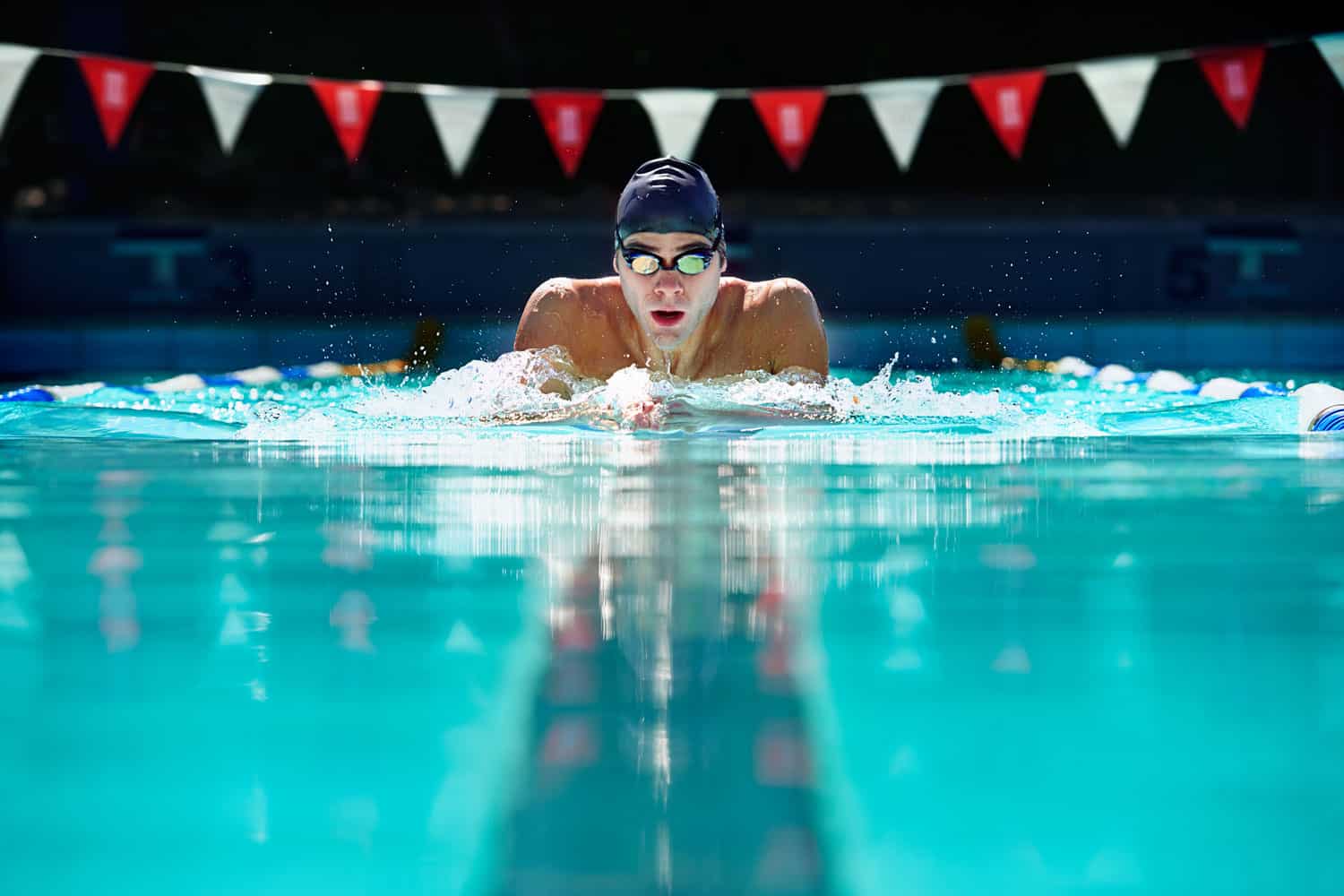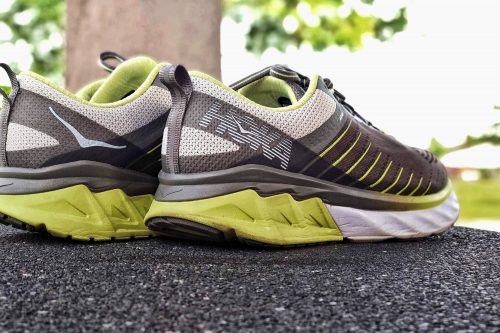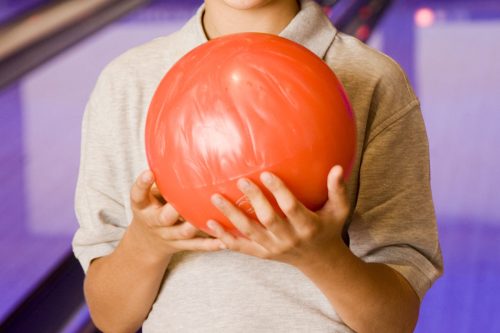Swimming is a full-body workout that can be considered a sport or a recreational activity. Many of us are subjected to swimming at early ages, and some learn as adults. Are you getting ready to jump into the pool or spending a day on the beach? You might be new to swimming or just want to learn more about the intricacies of swimming strokes. We have researched to provide you with a guide on the different swimming strokes and answer which stroke is easiest.
Breaststroke is considered the easiest swimming stroke. This is an ideal stroke for beginners because you have the option to keep your head above water.
Let's take a closer look at the benefits and risks of breaststroke and the best way to learn the movements. Read on as we discuss all five swimming strokes and which is the most difficult to learn.

The Ins and Outs of Breaststroke

Breaststroke is the easiest swim style to transition to from the instinctive doggy paddle. The propelling movement of this stroke can be done with or without your head under the water. This option makes the breaststroke, also known as the frog stroke, most comfortable for the beginner swimmer.
Breaststroke is the slowest stroke but requires endurance when swimming competitively. It is thought to be one of the oldest swimming styles, dating back to the Stone Age. This stroke is not only the easiest but also the most popular in today's recreational swimming.
How to learn breaststroke?
Establishing body position is the starting point to learning any style of the swim stroke. The body is kept in a flat position during breaststroke; this is different from the other strokes where rotation is needed. The starting or primary position requires the swimmer to be face down, with the head in or out of the water, the hands extended forward, and the legs extended in a straight line behind.
Leg Movement
The kick you perform with breaststroke really does mimic a frog's kick. There are two parts to this leg movement. First, you need to bring your feet into position to prepare for the thrust. From the starting position, you will keep your knees together while bringing your heels together toward your posterior. In this step of the kick, you want to remain as narrow as possible.
When your heels hit your posterior, it is time for the second movement or thrust. You will extend your legs out and to the side, with your feet flexed. This will give you the feeling that your feet are paddles. When this thrust movement is complete, your feet will meet again in the starting position. Here you will have a feeling of being propelled through the water or gliding. With your feet met in this position, it is time to pull them right back up to get ready for the next thrust.
You want to ensure your kicking technique is correct. Incorrect technique can cause issues like knee pain. Watch the video below for a complete breakdown and visual aid of the leg movement required in breaststroke.
Arm Movement
The movement with your arms requires three steps; outsweep, insweep, and recovery. The arm movement will begin with the outsweep motion. From the starting position, you will sweep your arms to the outside without bending the elbows. After this wide arm position, you will want to move on to the insweep.
This insweep motion can also be called the catch and pull. Your elbows will bend and be tucked to the side of your body. You will begin to grab onto the water. The movement you do with your cupped hands will look like you are scooping water toward your face. When your hands reach your face, you will move into the recovery phase.
With a quick movement, you will extend your arms back to the starting position. When you are back in this straight posture, it is time to go right back into the outsweep phase to continue your stroke.
This video will focus on the arm movements during breaststroke and give you some tips on improving this motion.
How do you breathe while doing breaststroke?
If you are doing the breaststroke with your head above the water at all times, you have more flexibility with the timing of your breath. If you are doing a standard breaststroke, your head will be below the water for most of the movement. Your eyes will be focused straight down. In this position, you will take a breath with each cycle of stroke.
Take note of when your arms begin the insweep motion. During this, your spine will lift, and your head should follow. You will take a breath in when your head comes out of the water. Once your arms have gone into the recovery motion, your head will be back under the water, where you will breathe out.
Is breaststroke bad for your back?
Swimming breaststroke is not bad for your back if you are executing this stroke appropriately. Correct form and posture is important for effective swimming but also protects your lower back.
Improper posture over time can cause strain in your lower back. It is okay to learn breaststroke initially with your head above water. Eventually, you do want to get the hang of this stroke with your head under the water. Prolonged time with your head above water with this stroke can cause your neck and back overuse, leading to pain.
Is breaststroke good for losing weight?
Swimming as a whole is one of the best sports for weight loss. The movements involved tone muscle, improve cardiac function, and improve your overall fitness. This full-body movement is a great choice of cardio for anyone looking to shed a few pounds. Swimming as an exercise is known to be kind on the joints as well.
That being said, breaststroke is the slowest calorie burner when compared to the other swimming styles. Breaststroke is known for its need for endurance, but you may want to practice one of the other four swimming strokes to burn calories quickly.
What are the 5 basic swimming strokes?
Breaststroke is just one of the swimming styles you can learn. Maybe you are looking for more of a challenge or hoping to move at a quicker pace in the water. There's a stroke for either case. The five basic swimming strokes include:
- Breaststroke
- Backstroke
- Butterfly
- Freestyle
- Sidestroke
We've given you a lot of insight into breaststroke already. Each stroke has its benefits and challenges. All types of swimming provide some health properties as you work your entire body through the water. The different strokes will focus on separate parts of the body and vary when it comes to difficulty. Let's give you some explanation of the following four swimming strokes.
Backstroke
You may hear backstroke be called the back crawl. This stroke allows you to breathe the easiest because your face is always out of the water. This is the only stroke that is swum on your back. Your arms do most of the work in this stroke as you lift them above your head in a propelling motion. Your feet add little movement as they flutter while held in a straight line.
Butterfly
The butterfly stroke is also known as the fly. This challenging stroke is done with symmetrical movements of the arms and a kick that requires two movements or more. This swimming style is known for its kick, known as the butterfly or dolphin kick. The butterfly stroke is the newest in the sport of competitive swimming.
Freestyle
Freestyle can be said as the front or forward crawl as well. This is the stroke that comes to mind when many people think of swimming and is the most common. In freestyle, you use your arms to push and pull the water while using a flutter kick to push you through the water. You use a side to side movement when changing arms, allowing your head to come out of the water on the side to breathe. Freestyle is known as the stroke that provides the most speed with the least effort.
Sidestroke
You will see the sidestroke often in long-distance swimming. This stroke can be done by laying on either the left or right side. Whichever side is not being used to gently push you through the water is given a chance to rest. The swimmer will have asymmetric leg and arm movements. This stroke has been known to save the lives of people who become tired in the water.
Read more on our blog post, "How Long Does It Take To Learn Swimming?"
Which swimming stroke is the fastest?
Freestyle or the front crawl is the fastest swimming stroke. Like the backstroke, freestyle is considered to be a long axis stroke. This stroke is faster than backstroke because the positioning requires you to be face down in the water. This position allows for a better range of motion of the arms but does mean you need to time your breath.
The side to side movement of freestyle and alternating arm strokes allows you to maintain a constant speed while in the water. The front crawl is one of the oldest swimming strokes, alongside the breaststroke.
Watch this short video on how to swim freestyle efficiently.
Which swimming stroke is the hardest?
The butterfly stroke is the hardest swimming stroke. This stroke requires nearly perfect technique and quite a bit of power. Swim coaches and athletes consider this to be the most challenging stroke by far. This is one of the newer strokes, coming into swimming competitions in 1933.
The synchronous movement leaves little to no room for error. The strength required is enough to dictate this swimming style as one of the hardest. The butterfly stroke is executed using a wave-like motion with the body as the arms and legs propel you through the water with a short breathing window.
Watch this video below to see how the butterfly stroke is performed.
Time For A Splash!
There is a lot of diversity within swimming. You can learn an easy stroke, practice being fast, or take on a serious challenge. Splash around with a leisurely day in the lake or dive into competitive swimming. There is a little something for every skill level of swimmer. Swimming is not only fun, but it is great for your overall health and fitness too. We hope you found this article helpful in breaking down the different swim stroke styles and why breaststroke is considered the easiest.
Looking to dive into some other water sports? Read our blog post, 10 Types Of Surfing Sports You Could Take Up.



![Read more about the article 12 Types Of Football Helmets [And Which One To Choose]](https://fitseer.com/wp-content/uploads/2021/09/An-unrecognizable-football-player-wearing-a-black-helmet-500x333.jpg)

![Read more about the article How Far Should I Hike In a Day? [Typical Numbers Revealed]](https://fitseer.com/wp-content/uploads/2020/11/Hikers-walking-on-a-hiking-trail-in-mountains-500x333.jpg)
